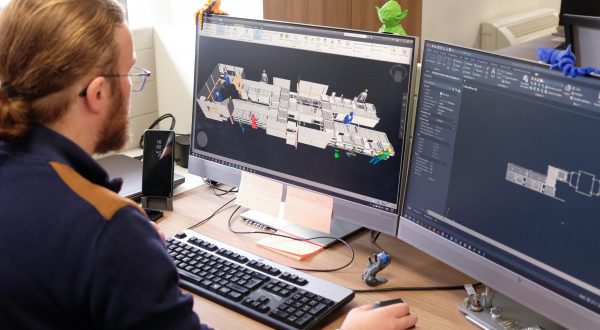Protecting health with digitised drug traceability system
Reading time: 4 min
In order to combat counterfeiting and parallel trade, there is a need to serialise drugs in a number of markets. Courbon Software, a VINCI Energies business unit at the leading edge of this field, is rolling out its solution worldwide.
![]()
The European Falsified Medicines Directive (FMD), in effect since February 2019, requires laboratories and pharmacies to ensure that drugs are serialised. This means setting up a system to verify the authenticity of products, which involves adding a unique serial number to each drug package – a number that is then logged in a central database. This system of “package traceability” is intended to prevent counterfeiting and parallel trade.
VINCI Energies business unit Courbon Software, which publishes MES software for the industrial sector, anticipated this regulatory development by creating an ad-hoc, Industry 4.0-ready solution 8 years ago. Named “Pharmacim-LSM” (Label Serialization Management), it is one of 5 flagship solutions in the market.
“We allocate between 10 and 20% of our sales to R&D, which allows us to invest in innovation and development for new products,” says François Lavabre, business manager of Courbon Software.
“With this type of project, you need to be inventive in all areas – not just in terms of the software but also the machines”
The Pharmacim-LSM solution is currently deployed across some 300 production lines worldwide on behalf of a dozen clients, including Delpharm.
This French pharmaceutical manufacturer, which started looking into drug serialisation back in 2012, appointed Courbon Software in 2014 to incorporate the solution into all of its sites. “With this type of project, you need to be inventive in all areas – not just in terms of the software but also the machines,” points out Lavabre.
An agile and non-intrusive system
Many challenges have had to be met so far: “We first had to adapt to changes in the regulation, which is coming into force at different times depending on the market (in Russia for example, it only became applicable on 1 January 2020) and which varies from country to country, with different QR codes, codifications and sizes,” explains the head of Courbon Software.
The company has demonstrated its technological capabilities by tailoring the system to various outputs, some of which are very high (over 300 parts per minute), providing information in real time on the packaging lines by managing big data streaming, and anticipating the replacement of operating systems or equipment discontinued by its manufacturers.
All of this must be achieved “while ensuring productivity on client production lines is not affected, which means designing the least intrusive system,” says Lavabre.
Supplemented by a 24/7 maintenance team, Courbon Software’s project unit produces and implements the software packages as part of an end-to-end service that includes selling the machines and supporting client project teams.
“In order to be able to deploy the system at the same time both centrally and across the production lines, it’s crucial that we have staff on hand who understand the client’s business and processes and who are skilled not just in automation systems but in software programmes.”
The pressure is all the more intense since the introduction of this type of solution, which is of strategic importance for manufacturers, is generally monitored at the highest level of the company.
23/07/2020





